MATEWAN – The West Virginia Mine Wars Museum, now under construction in Matewan, invites the public to its open house on November 8, from 12 – 4 p.m. Attendees will experience a sneak peak of the museum’s plans and contribute their ideas on how they think the museum should look and feel.
Remembering Ludlow
Great article published recently in Colorado Country Life Magazine about the 100th anniversary of the Ludlow Massacre in April 1914.
100 years ago today
100 years ago today, on the night of February 7, 1913 the infamous “Bull Moose Special” incident took place at Holly Grove near the mouth of Paint Creek. The Bull Moose Special was an armor plated Camp O locomotive, passenger car, and freight car that was armed with two machine guns that was used to intimidate striking miners on Paint and Cabin Creeks and to haul scab labor up the creeks. Early in the day Baldwin Felts guards stationed at Mucklow had gotten into a couple of battles with strikers in the tent colony at Holly Grove who got the better of them. The guards notified authorities in Charleston which led Kanawha County Sheriff Bonner Hill, coal operator Quinn Morton, and a couple dozen deputies, mine guards, Camp O special agents, and Baldwin Felts detectives armed with high powered Winchester rifles to board the Bull Moose and head toward Holly Grove. The train arrived at the mouth of Paint Creek shortly before midnight. All the lights were extinguished and the train quietly and slowly approached the tent colony at Holly Grove. The miners had anticipated this and had evacuated the women and children but their intelligence led them to believe the train would arrive later.
As the Bull Moose passed through a cut in the mountain the engineer gave two short toots on the whistle at which time the men aboard opened up on the tents lining either side of the track at point blank range with a fusillade of machine gun and rifle fire. The miners were caught by surprise but soon regrouped and began returning fire. The engagement grew hotter and when a bullet clipped a finger from the engineer’s hand he steamed up and proceeded up the creek. Morton is said to have demanded that he back up so they could give the miners another round. In its wake the Bull Moose left one miner dead, Cesco Estep who left a widow and infant child and a neighbor woman with machine gun bullets through both legs. Sarah “Ma” Blizzard and other miners’ wives were said to have moved up the creek afterwards where they pried up rails to prevent the Bull Moose from returning. This event became one of the most notorious events of the WV mine wars.
Photo of the Bull Moose Special at Holly Grove
From:Coal Country Tours
Blair During the Battle of Blair Mountain
Silent film taken right after the Battle of Blair Mountain. Features never before scenes from the battle.
Copyright by Kenneth King.
The Siege of Crooked Creek Gap
The Siege of Crooked Creek Gap
The West Virginia Genealogy site has several interviews with miners that fought in the Siege of Crooked Creek Gap, which was one of the areas nearest to Logan. It is considered the “hide tide” of the miner’s army advance.
Ludlow, 98 years ago
On April 20, 1914, in Ludlow Colorado, state National Guard troops fired upon striking immigrants that worked in the coal mines. The massacre resulted in the violent deaths of between 19 and 25 people; sources vary but all sources include two women and eleven children, asphyxiated and burned to death under a single tent. In retaliation, miners armed themselves and attacked dozens of mines over the next ten days, destroying property and engaging in several skirmishes with the Colorado National Guard along a 40-mile front from Trinidad to Walsenburg. It only ended when US regulars were sent in to disarm both the National Guard and miners. The entire war would cost between 69 and 199 lives, described as the “deadliest strike in the history of the United States”.
Start of Mine War, 100 Years Ago
Krag Rifle
The Krag-Jørgensen is a repeating bolt action rifle designed by the Norwegians Ole Herman Johannes Krag and Erik Jørgensen in the late 19th century. It was adopted as a standard arm by Denmark, the United States of America and Norway.
A distinctive feature of the Krag-Jørgensen action was its magazine. While many other rifles of its era used an integral box magazine loaded by a charger or stripper clip, the magazine of the Krag-Jørgensen was integral with the receiver (the part of the rifle that houses the operating parts), featuring an opening on the right hand side with a hinged cover. Instead of a charger, single cartridges were inserted through the side opening, and were pushed up, around, and into the action by a spring follower.
The design presented both advantages and disadvantages compared with a top-loading "box" magazine. A similar claw type clip would be made for the Krag that allowed the magazine to be loaded all at once, also known as the Krag "Speedloader magazine". Normal loading was one cartridge at a time, and this could be done more easily with a Krag than a rifle with a "box" magazine. In fact, several cartridges can be dumped into the opened magazine of a Krag at once with no need for careful placement, and when shutting the magazine-door the cartridges are forced to line up correctly inside the magazine. The design was also easy to "top off", and unlike most top-loading magazines, the Krag-Jørgensen's magazine could be topped up without opening the rifle's bolt. The relative complexity of manufacturing this magazine has been suggested as a reason why many countries did not adopt the Krag-Jørgensen. For others, the magazine's features likely aided adoption.
The Krag was not used on a wide scale and doesn't show up in photos. BUT Sid Hatfield purchased 10,000 rounds of 30.40 Krag ammo for sale at his store in Matewan after the massacre, so some miners had them. At the time of the battle, they were just starting to show up on the civilian market. Odds are more likely that they were used by Chafin's militia more than the miner's themselves.
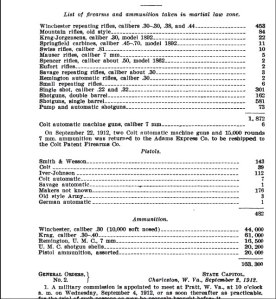
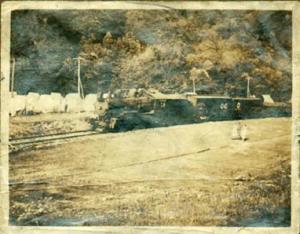
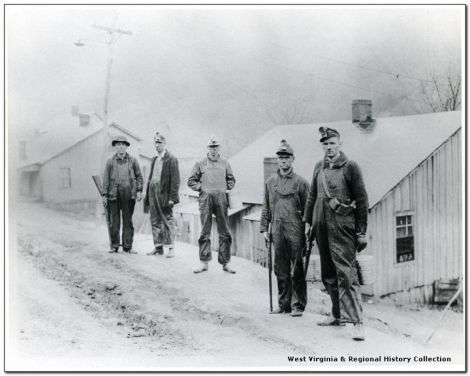
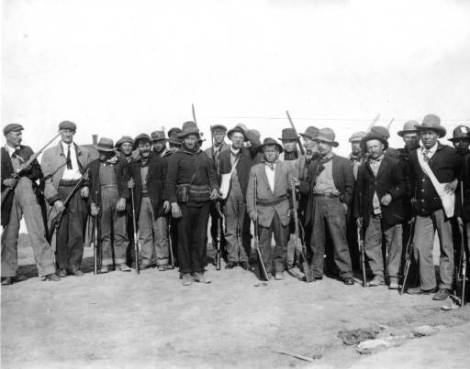
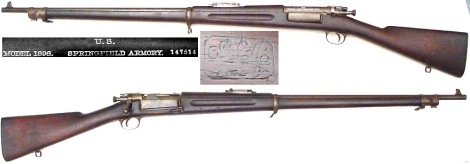
You must be logged in to post a comment.